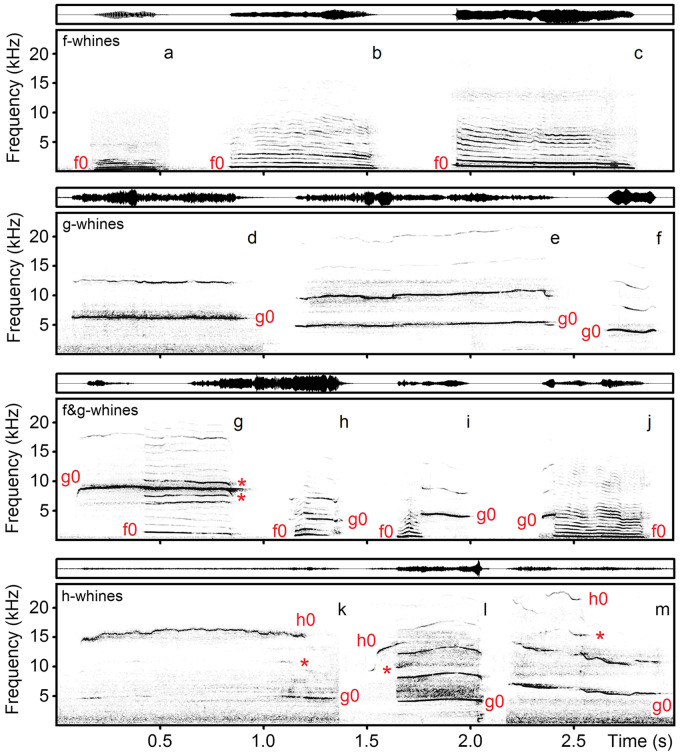Figure 1.
Spectrograms (below) and waveforms (above) of different whines of domestic dogs: f-whines—the whines with the low fundamental frequency f0 alone; g-whines—the whines with the high fundamental frequency g0 alone; f&g-whines—the whines with both low f0 and high g0 fundamental frequencies, combinatory frequency bands between f0 and g0 are labeled with asterisk; h-whines—the whines containing the ultra-high (h0) fundamental frequency, combinatory frequency bands between g0 and h0 are labeled with asterisk. (a) f-whine of Caucasian shepherd #6; (b) f-whine of spaniel mix #14; (c) f-whine of toy dachshund #7; (d) g-whine of spaniel mix #14; (e) g-whine of toy terrier and pincher #9; (f) g-whine of husky #16; (g) f&g-whine of dachshund #11; (h) f&g-whine of East European shepherd #20; (i) f&g-whine of husky #16; (j) f&g-whine of Weimar hound #18; (k) h-whine of dachshund #10; (l) h-whine of greyhound hortaya #15; (m) h-whine of toy terrier #8. The spectrograms were created with Hamming window, 48 kHz sampling rate, FFT 1024 points, frame 50% and overlap 93.75%. The audio file with these calls is provided in Supplementary material Audio S3.

